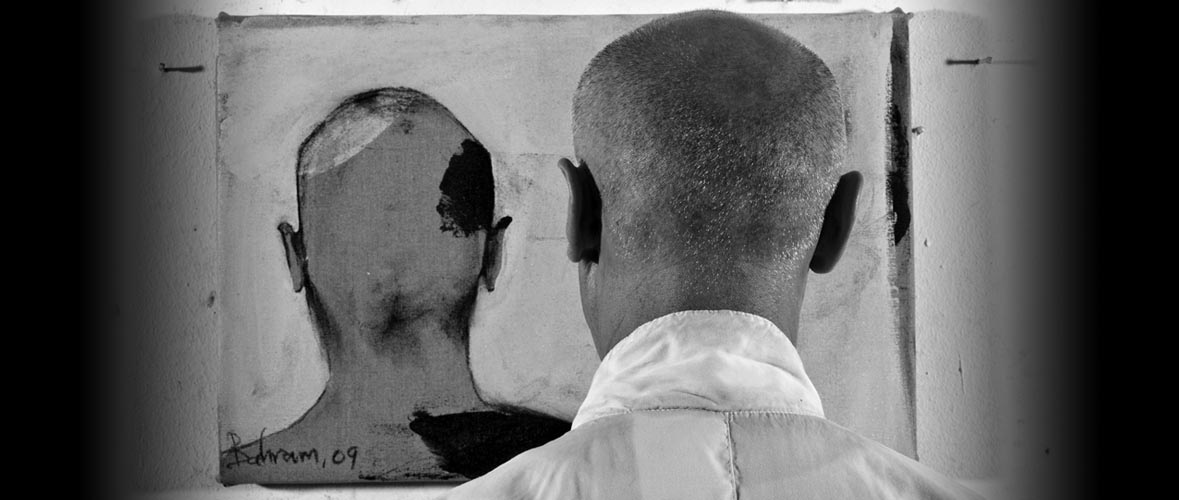

Bahram Hajou, a Kurdish artist living in Germany, has been concerned with painting for over twenty years. It is surprising that the figure as an expression of the essence of the drama of human life is an almost exclusive theme of his paintings.
Initially, he was concerned with the sphere of subculture and people on the periphery of society, but the focus of his work has gradually shifted to the intimacy between man and woman. His artistic conception has successfully absorbed the strong expressive line of European Modernism and Postmodernism, connecting it with his inclination towards ethnic culture and traditions.
The paintings by Bahram Hajou capture the viewer’s attention at first sight by a highly convincing power of expression and inner strength. At the same time his method of painting is almost austere as to subject matter and form. His exclusively one or three figure compositions are set in an indistinct space. The nudes, half dressed figures, seem to be unable to enter into a dialogue. The suggestive expression often concentrates on the faces dominated by a penetrating gaze. His inclination to monochrome, the shades of grey and brown-black tones, is sometimes brightened up by red, blue or green accents. In this narrow colour scale the artist develops various possibilities of his painting style, combining it with drawing. His painting is about complexity in simplicity, about the rich spiritual world of a lonely individual, about isolation and alienation as well as about a desire for love and understanding.
The work by Bahram Hajou is an outstanding example of the penetration of various differences in culture, ethnicity, society and opinion within new contexts of the multicultural symbiosis.
The journey of Bahram Hajou to Münster in Germany, where he lives, was complicated. During the turbulent 1970s he studied at the Academy of Fine Arts in Bagdad. From there he travelled to East Berlin via Prague and then to West Berlin and eventually to Münster. There he began to study archaeology in 1976 and then pursued his studies in fine art. In 1987 he graduated from the Academy in Düsseldorf, a Münster branch of the Academy. He has worked as a freelance artist since 1989.



































